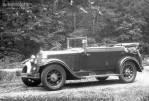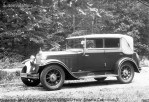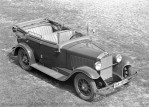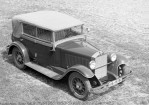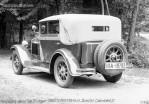Segment: Roadster & Convertible
Production years: 1929, 1930, 1931, 1932, 1933, 1934
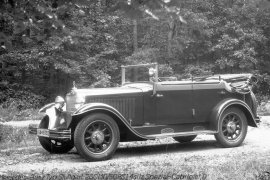 10 Photos
10 PhotosWhen Daimler-Motoren-Gesellschaft and Benz&Cie merged, the new company faced a serious dilemma: either build expensive, luxury cars or mass-market, affordable ones.
The decision was difficult, but in the end, the newly formed Mercedes-Benz focused on the luxury market, and that was a wise decision. Soon after, the automaker introduced the Typ 260, also known as Stuttgart, in a few bodywork versions, including a closed bodywork, a roadster, and a four-door cabriolet known as Cabriolet D.
Changing the bodywork for a car in those times was easy since most vehicles were built on top of a chassis. Thus, Mercedes-Benz didn't have any problems creating a Cabriolet on the same base as the Sedan version. All it had to do was to remove the upper side of the bodywork and install a retractable canvas at the back of the cabin. The vehicle's front looked identical to the Sedan, but there were no B- or C-pillars. Fortunately, the automaker kept the side windows, albeit these were removable for a complete, open-top experience.
To access the cabin, the automaker installed four doors, those at the front being rear-hinged type. There were two seats at the front and a bench in the rear. Mercedes-Benz also focused on using high-quality materials inside to create a luxurious cockpit.
Under the long hood, Mercedes-Benz installed the same 2.6-liter inline-six with side valves that produced a healthy 50 horsepower. The powerplant was paired with a three-speed manual gearbox and sent its twisting force to the rear wheels.
MERCEDES BENZ Typ Stuttgart 260 Spezial Cabriolet D (W11) 1929, 1930, 1931, 1932, 1933, 1934
- 2.6
MERCEDES BENZ Typ Stuttgart 260 Spezial Cabriolet D (W11)
2.6
ENGINE SPECS - 2.6 | |
|---|---|
| Cylinders: | L6 |
| Displacement: | 2581 cm3 |
| Power: | 37 KW @ 3400 RPM 50 HP @ 3400 RPM 50 BHP @ 3400 RPM |
| Torque: | 100 lb-ft @ 1200 RPM 135 Nm @ 1200 RPM |
| Fuel System: | Carburetor |
| Fuel: | Gasoline |
PERFORMANCE SPECS | |
|---|---|
| Top Speed: | 56 mph (90 km/h) |
TRANSMISSION SPECS | |
|---|---|
| Drive Type: | Rear Wheel Drive |
| Gearbox: | Manual, 3 Speed |
BRAKES SPECS | |
|---|---|
| Front: | Drums |
| Rear: | Drums |
TIRES SPECS | |
|---|---|
| Tire Size: | 5.25-20 |
DIMENSIONS | |
|---|---|
| Length: | 172.4 in (4379 mm) |
| Width: | 66.1 in (1679 mm) |
| Height: | 70.9 in (1801 mm) |
| Front/rear Track: | 56.1/56.1 in (1,425/1,425 mm) |
| Wheelbase: | 110.6 in (2809 mm) |
WEIGHT SPECS | |
|---|---|
| Unladen Weight: | 2976 lbs (1350 kg) |
| Gross Weight Limit: | 4299 lbs (1950 kg) |
FUEL ECONOMY (NEDC) | |
|---|---|
| Combined: | 13.8 mpg US (17 L/100Km) |
| CO2 Emissions: | 406 g/km |
